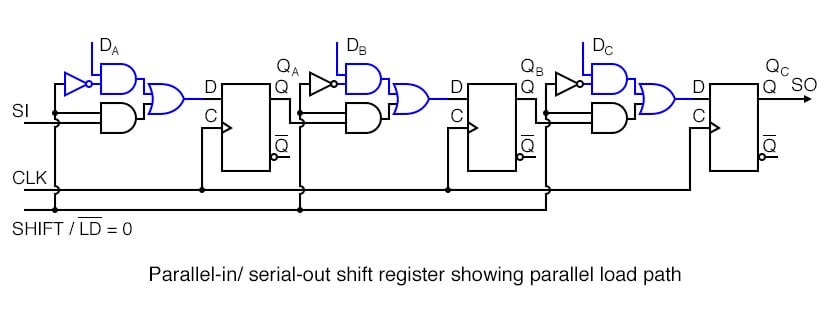


They are used in communication lines where demultiplexing of a data line into several parallel lines is required because the main use of the SIPO register is to convert serial data into parallel data. The above circuit is an example of shift right register, taking the serial data input from the left side of the flip flop and producing a parallel output. All these flip-flops are synchronous with each other since the same clock signal is applied to each flip flop. The output of the first flip flop is connected to the input of the next flip flop and so on. The clear (CLR) signal is connected in addition to the clock signal to all the 4 flip flops in order to RESET them. The circuit consists of four D flip-flops which are connected. The logic circuit given below shows a serial-in-parallel-out shift register. The shift register, which allows serial input (one bit after the other through a single data line) and produces a parallel output is known as Serial-In Parallel-Out shift register. Serial-In Parallel-Out shift Register (SIPO) – The main use of a SISO is to act as a delay element. The above circuit is an example of shift right register, taking the serial data input from the left side of the flip flop. The circuit consists of four D flip-flops which are connected in a serial manner. The logic circuit given below shows a serial-in serial-out shift register.

Since there is only one output, the data leaves the shift register one bit at a time in a serial pattern, thus the name Serial-In Serial-Out Shift Register. The shift register, which allows serial input (one bit after the other through a single data line) and produces a serial output is known as Serial-In Serial-Out shift register.

Parallel In parallel Out shift register Serial-In Serial-Out Shift Register (SISO) –.Shift registers are basically of 4 types. The registers which will shift the bits to right are called “Shift right registers”. The registers which will shift the bits to left are called “Shift left registers”. An n-bit shift register can be formed by connecting n flip-flops where each flip flop stores a single bit of data. The bits stored in such registers can be made to move within the registers and in/out of the registers by applying clock pulses. Shift Register is a group of flip flops used to store multiple bits of data. The information stored within these registers can be transferred with the help of shift registers.
#How a parallel to serial converter works series#
It is a group of flip flops connected in series used to store multiple bits of data. A Register is a device which is used to store such information. N flip flops are to be connected in an order to store n bits of data. However, in order to store multiple bits of data, we need multiple flip flops. ISRO CS Syllabus for Scientist/Engineer Examįlip flops can be used to store a single bit of binary data (1or 0).ISRO CS Original Papers and Official Keys.GATE CS Original Papers and Official Keys.


 0 kommentar(er)
0 kommentar(er)
